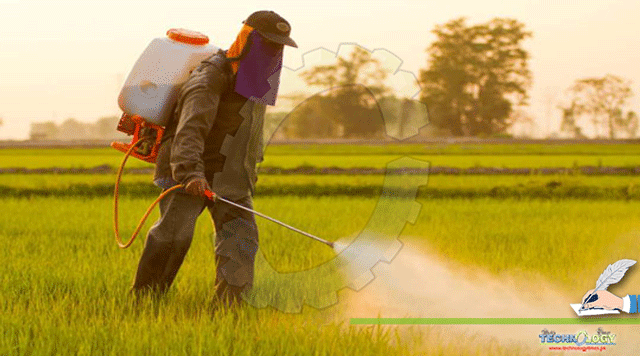Agrochemical refers to a wide range of pesticides, including herbicides, insecticides, fungicides and synthetic fertilizers.

By Muhammad Asif, Muhammad Tayyab and Syed Hassan Ali Sha
Introduction
Agrochemicals are becoming more important part of modern agriculture. Because these chemicals are increasing the yield of agricultural crops. These are also protecting the crops from diseases. The better usage of agrochemical fertilizer results in more agriculture crop production. Due to high production, the requirement of food in the world is fulfilled. There are many agronomic practices which are increasing the production of crops on large scale. In Pakistan, the pesticides were first introduced to control locust infestations. But slowly their widespread use became necessary to meet the requirements of the Green Revolution in the 1960s.
Demerits of Agrochemical
On the other hand, the intensive use of pesticides in agriculture has resulted serious problems. The plants do not absorb most of the inorganic fertilizer. That’s why these chemicals mixes in the air and also in ground water. It pollutes the air and water reservoir from where animals drink water to quench their thrist.
In humans and livestock, agrochemicals interfere with oxygen uptake and enter into their circulatory system, where it causes many diseases. Many agricultural chemicals are dangerous. In high storage poses significant environmental and health risks. According to agricultural Research Council reports, 84 percent of field workers blood samples and 72 percent of female cotton picker’s milk were contaminated with significant amounts of agrochemicals. While the red blood cell cholinesterase levels were below 50 percent and 27 percent, respectively.
In addition, agricultural chemicals decrease the biodiversity, nitrogen fixation, pollination in plants and threaten the species. Similarly, while spraying on hydrophytic plants, these substances affect the population of local fish and other creatures of water. Due to misuse of pesticides the birds and animals on terrestrial environment are in danger. In many researches due to chemical spray found that, animals from which we get milk and meat are affected in large scale. The chemicals affect the beneficial pollinators like honeybees, butterflies, ladybirds beetles and dragon flies.
Various types of pesticides have a tendency to preserve in plants for long periods of time and they enter into the food chain of plants. These plants have eaten by animals and birds. We get food from these animals and birds which ultimately affects our health. Furthermore, usage of pesticides increases environmental troublesome. Likewise, 95% of sprayed herbicides and 98% of insecticides do not reach targeted place.
Fertilizer Sales Representatives
Farmers are becoming the victims of pesticide marketing companies that want their sales volume to keep growing year after year. Multinational companies force the sales representative for the specific purpose of fulfilling the targets. Moreover, in case of any pest attack or any disease appeared in crops, farmers apply non selective pesticides without guidance with plant pathologist. It not only fails to kill that specific pest or control that disease, but also increases the farmers expenditures and pollute the environment. That’s why consulting with experts is necessary before spraying specific pest or controlling disease in plants.
Bigotry of non-registered and non-licenced Companies
In Pakistan, non-registered and non-licenced sales companies sell the banned and dangerous pesticides. Such as DDT, BHС, Endosulphan, Methyl Parathion and Cypermethrin. These pesticides show their toxic symptoms later. Integrated pest management is an effective approach to pest management that depends on a combination of common practices. Integrated pest management system use, comprehensive information on the life cycle of pests and their contact with the environment.
Conclusion
To protect the environment from the hazards of agrochemicals, we should use bio-pesticides, bio-fertilizers and different agronomic practices to increase agriculture production. The most common bio-pesticides are neem and bitter-apple. The bitter-apple has grest power to repel the pests due to it’s bitter nature.There are other common bio-pesticides like Bacillus thurigiensis, Bасulоviruses.
Biofertilizers are important source of plant nutrition. Most biofertilizers belongs to two categories, nitrogen fixing and phosphate solubilising. Nitrogen fixing fertilizers fixes the atmospheric nitrogen into a usable form for plants. While Rhizobium bacteria requires association with the root nodules of legumes to fix nitrogen. Phosphate solubilizing microorganisms secrete organic acids, which boost up the uptake of phosphorus by plants. These phosphate solublising microorganisms dissolve rock phosphate and tricalcium phosphates. There are other different methods which control the pests. Like using trap crops, inter-cropping, crop rotation, cultural and physical control practices.
Author: Muhammad Asif, Muhammad Tayyab and Syed Hassan Ali Shah